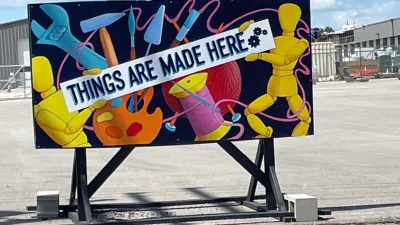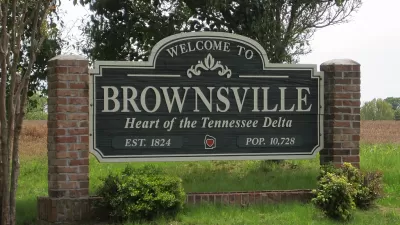At a recent event in Los Angeles, Cecilia Estolano, CEO of the Community Redevelopment Agency of the City of Los Angeles, presented her vision for the Downtown of the future in one of the country's most notoriously diffuse urban centers.
The articles features excerpts from Cecilia Estolano's presentation:
"Thus, the question is not whether we need a downtown-we have a downtown-it's what is the downtown that we want? We're trying to rebuild a downtown of angels, not of demons, a downtown that is economically diverse, that is not just about the corporate elite, and that is about the aspirations of the immigrants and entrepreneurial spirit that made this a great city and has always made it a great city..."
"The other thing I want to say about Downtown is we also need to worry about the space itself. We've overly master-planned it. There is not a single spontaneous site along Grand Avenue. We need to focus now away from the mega projects into spontaneity. What are the interesting little places we can create-the little bookstores, the little funky houses, the little cool retail spaces? One of my jobs is to keep those retailers in business. All those cool retailers keep people living Downtown, wanting to stay in Downtown."
"A downtown should be filled with experimentation, public spaces, opportunities for new industries, places where creative classes come together, and cultural and entertainment venues that aren't exclusively corporate. As much as I am appreciative of the jobs created by L.A. Live and the tremendous spirit and energy that comes out of having the brands there, I still think it would be wonderful to have more serendipitous and authentic spaces for Downtown."
Thanks to James Brasuell
FULL STORY: Estolano: What Does CRA/LA Envision for ‘Downtown’ L.A.?

Trump Administration Could Effectively End Housing Voucher Program
Federal officials are eyeing major cuts to the Section 8 program that helps millions of low-income households pay rent.

Planetizen Federal Action Tracker
A weekly monitor of how Trump’s orders and actions are impacting planners and planning in America.

Ken Jennings Launches Transit Web Series
The Jeopardy champ wants you to ride public transit.

Crime Continues to Drop on Philly, San Francisco Transit Systems
SEPTA and BART both saw significant declines in violent crime in the first quarter of 2025.

How South LA Green Spaces Power Community Health and Hope
Green spaces like South L.A. Wetlands Park are helping South Los Angeles residents promote healthy lifestyles, build community, and advocate for improvements that reflect local needs in historically underserved neighborhoods.

Sacramento Plans ‘Quick-Build’ Road Safety Projects
The city wants to accelerate small-scale safety improvements that use low-cost equipment to make an impact at dangerous intersections.
Urban Design for Planners 1: Software Tools
This six-course series explores essential urban design concepts using open source software and equips planners with the tools they need to participate fully in the urban design process.
Planning for Universal Design
Learn the tools for implementing Universal Design in planning regulations.
Heyer Gruel & Associates PA
Ada County Highway District
Institute for Housing and Urban Development Studies (IHS)
City of Grandview
Harvard GSD Executive Education
Toledo-Lucas County Plan Commissions
Salt Lake City
NYU Wagner Graduate School of Public Service





























